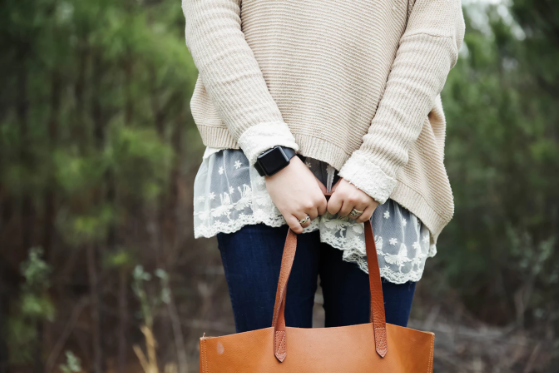We’ve all been there. The air gets a little chilly and it’s time to pull our winter attire out from last season. Then we notice that stain. What could it be? Salad dressing? Wine? Mustard? Some stains can be handled at home, but when in doubt it is always best to leave it up to a professional. Leather and Suede are expensive and durable materials that can last a lifetime, but only when cared for properly.
How To Tell If It’s Real Or Imitation
A pink “suede” bag used to be the first sign that the item was imitation or fake suede. Now there are many methods for dying natural suede, so color is not always a good indicator of real or imitation suede. Suede skins usually have inconsistencies on the surface like skin defects from disease and wounds, and a coarser surface texture on the reverse side.
Imitation suede is man-made from polyester-microfiber material and is adhered to a woven base. Imitation suede has a smooth, even surface that appears similar on both sides of the item. Another way to identify the source of the fabric is the washing instructions on the label. If it indicates the item can be cleaned in the same fashion as your other garments, chances are it’s synthetic.
Suede
Suede can be one of the most difficult fabrics to clean and maintain, but if you take good care of your suede it can last for generations. Suede is an animal hide from the inner layer that has been sanded into a velvety texture. It is used for a variety of items from jackets and belts to handbags and shoes. If you notice dirt or soil on your favorite suede item, try to brush away the dirt with a clean, dry towel. Do your favorite boots have a scuff on them? Use a pencil eraser to erase the scuff. A cloth with white vinegar may also help get rid of stains on suede. It’s important to allow the vinegar to dry and monitor your success carefully. If that fails, use a special suede brush. This brush will have two sides, one for brushing away debris, the other to buff out the nap.
Leather Maintenance
Conventional leather needs a leather conditioner to help it stay in the best shape, but too much may make the leather deteriorate and too little may cause the leather to become brittle and crack. Not all conditioners are created equally. Be sure to read the label to ensure you are using the right product for your garment. Pure mink oil or other animal oils are best suited for leather. Leather conditioners do not always have waterproofing capabilities.
Waterproofing
Most leather goods are already treated with some type of waterproofing by the manufacturer. If you are unsure you can always check with the manufacturer or your professional dry cleaner. Many leather conditioners do not have waterproofing capabilities. It is important to waterproof your jacket, shoes, or handbag once a year in order to allow water to bead up and roll off. Sprays are quick and easy but don’t have the longevity of waxes. Sprays also get on parts of the jacket like zippers and cause unnecessary damage over time.
When in Doubt, Leave it to a Professional
With proper care and attention, your leather garment can last a lifetime; however, when in doubt, leave it to the professionals at Executive Cleaners. We are much more than expert cleaning and laundry services. Our approach to conducting business is different – we continually raise the bar of quality in the dry cleaning community. Contact us at 203-877-4747 or visit our website for more information.

Sources:

 Our approach to conducting business is different - we continually raise the bar of quality in the dry cleaning community. Recognized by the International Fabricare Institute for a true commitment to high dry cleaning quality, Executive Cleaners achieved a performance level that few dry cleaning companies achieve. The results were deemed "absolutely superb" by professionals in the industry. Frankly, we would accept nothing less.
Our approach to conducting business is different - we continually raise the bar of quality in the dry cleaning community. Recognized by the International Fabricare Institute for a true commitment to high dry cleaning quality, Executive Cleaners achieved a performance level that few dry cleaning companies achieve. The results were deemed "absolutely superb" by professionals in the industry. Frankly, we would accept nothing less.